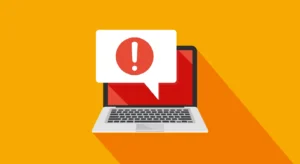In the ever-evolving financial industry, Accounts Payable (AP) stands at a crossroads of innovation and efficiency. As 2025 gets underway, businesses must reassess their AP strategies, setting benchmarks that highlight inefficiencies and growth opportunities. By evaluating these metrics, companies can refine their AP processes and position themselves as leaders in financial operations.
The Role of Automation in AP Evolution
Automation continues to transform AP processes. By implementing tools that integrate seamlessly into existing systems, businesses can reap the benefits of lower costs, faster processing times, and enhanced accuracy. For example, intelligent vendor capture solutions streamline invoice receipt and validation, paving the way for end-to-end automation.
Evaluating AP Performance in 2024 and Predicting AP Results in 2025
Every company wants its AP department to be well-managed and efficient, but assessing current processes to identify areas for improvement is often challenging. By evaluating AP performance over the past year using specific metrics or key performance indicators (KPIs), businesses can more reliably pinpoint inefficiencies.
Tracking relevant performance metrics helps streamline processes, reduce expenses, and drive better decision-making.
The Benefits of Monitoring AP Metrics
Keeping tabs on AP metrics and KPIs ensures operational efficiency, cost-effectiveness, accuracy, compliance, and strategic growth. It also helps teams address process issues, like bottlenecks, which can lead to payment delays or lost invoices. Benefits of monitoring AP metrics include:
- Optimized Processes: Identify bottlenecks and areas for improvement, such as invoice processing and payment cycle time.
- Improved Resource Allocation: Determine how workloads should be distributed and when additional resources are needed to boost team productivity.
- Reduced Errors: Highlight common mistakes and implement corrective actions.
- Better Expense Tracking: Metrics like cost-per-invoice and early payment discounts help reduce costs and manage expenses more effectively.
- Proactive Risk Prevention: Detect duplicate payments and error rates to minimize fraud. Late payment tracking helps prevent financial losses.
- Better Supplier Relations: Monitoring metrics like late payment rates ensures timely payments, improving supplier relationships.
Tracking the right accounts payable metrics can inform improvement plans and support better decision-making.
Percent of Invoices Submitted Electronically
Electronic invoicing (eInvoicing) is pivotal for AP performance. In 2021, only 51 percent of invoices were submitted electronically, leaving room for improvement. Businesses leveraging eInvoicing reduce costs, improve processing speed, and minimize errors. By 2025, organizations targeting straight-through processing should aim to increase electronic submissions to 75 percent or more.
Total Cost per Invoice Processed
The true cost of processing an invoice goes far beyond the surface-level expenses of labor or technology – it’s a composite figure that indicates human hours, software costs, physical resources, and transaction fees. In 2021, the average cost per invoice stood at $10.89, underscoring the significant opportunity for improvement. For best-in-class organizations, processing costs are up to 80 percent lower, showcasing the potential impact of optimized AP systems.
Tracking the average processing cost per invoice is arguably the most critical metric for accounts payable departments. By measuring the total cost across all steps required to process an invoice, AP teams can uncover inefficiencies, justify automation investments, and demonstrate ROI to senior management. Here’s how to calculate this metric:
- Labor Costs: This includes wages paid to employees involved in every step of the invoice process. To calculate, track the time spent by each team member on activities like data entry, validation, exception handling, and approvals. Understanding how much time staff spends on manual tasks highlights opportunities for automation and efficiency gains.
- Software Costs: Divide the cost of your AP software by the appropriate timeframe to understand the technology’s share of your processing cost. Include licensing fees, subscriptions, and maintenance charges for invoice management systems.
- Physical Resources: Even in the digital age, paper-based processes still significantly contribute to AP costs. Account for expenses like paper, envelopes, stamps, ink, and printer maintenance. Eliminating these costs by increasing e-invoicing adoption directly lowers processing expenses.
- Transaction Fees: Payments made via ACH, credit card, eCheck or wire transfer often carry transaction fees. Incorporating these into your calculations ensures a comprehensive cost-per-invoice figure.
You can pinpoint your AP cost per invoice by dividing the total expenses incurred in processing invoices over a specific period by the number of invoices handled during that time.
Invoice Exception Rate
Invoice exceptions – errors or discrepancies that prevent an invoice from being processed automatically – remain a persistent challenge in accounts payable. On average, 24.6 percent of invoices require manual intervention, costing businesses valuable time, delaying payments, and increasing operational expenses. By identifying and addressing the root causes of these exceptions, organizations can drastically improve their AP efficiency and financial health.
Some common types of invoice exceptions include:
- Incorrectly Entered Invoice Data: Typos or missing information create discrepancies during processing.
- Mismatch with Purchase Orders: When invoice details don’t align with corresponding purchase orders, validation fails, triggering manual reviews.
The consequences of exceptions go beyond mere inconvenience. Erroneous payments, delays in processing, and wasted labor hours inflate costs and hinder cash flow management and supplier relationships.
Tracking the percentage of exceptions relative to the total number of invoices processed provides valuable insights into AP performance. This metric reveals how much time your AP staff spends correcting errors instead of engaging in productive, value-added tasks. However, measurement alone isn’t enough – diagnosing the issue at each processing stage is critical to implementing effective solutions.
- Transparency at Every Stage: To pinpoint bottlenecks, businesses must analyze exceptions at each step of the AP workflow. For example:
- Are errors occurring during data capture?
- Do discrepancies emerge during matching and validation?
- Is a lack of communication between systems or departments causing delays?
- Leveraging Automation: Advanced AP systems, like those offered by DataServ, use automation to streamline processes, reducing human error and ensuring consistency. For instance, implementing AI-based tools can automatically flag mismatches or missing data, accelerating resolutions and lowering exception rates.
- Improving Communication and Collaboration: Exception rates often stem from poor communication between AP, procurement, and suppliers. Clear, standardized processes and real-time updates help mitigate errors, ensuring all stakeholders are aligned.
- Focusing on Exception Rates by Stage: Breaking down exceptions by specific processing stages enables a more granular view of inefficiencies. Identifying stages with the highest error rates can help prioritize automation and training efforts.
Invoice Exception Rate by Stage
Tracking the percentage of exceptions relative to the total number of invoices processed provides valuable insights into AP performance. This metric reveals how much time your AP staff spends correcting errors instead of engaging in productive, value-added tasks. However, measurement alone isn’t enough – diagnosing the issue at each processing stage is critical to implementing effective solutions.
Cost Forecasting Accuracy
Cost forecasting accuracy is a critical benchmark for evaluating the effectiveness of your AP system. Reflect on last year’s predictions – how closely did your projections align with actual costs? If discrepancies arose, did your tool provide insights into which elements deviated the most? For example, if one forecasted cost turned out to be significantly wrong but had a minimal overall budgetary impact, while another was more accurate but had a greater impact, understanding these nuances is key to optimizing resource allocation.
Modern AP tools, such as those offered by DataServ, should do more than flag inaccuracies – they should help you analyze where and why deviations occurred. These insights enable businesses to adjust their forecasting models dynamically, refine processes, and ensure resources are directed to areas that drive the most value. By leveraging real-time data and predictive analytics, organizations can take a more informed approach to managing costs and improving overall financial strategy.
AI Accuracy by Processing Step
Artificial intelligence (AI) has become an integral part of modern accounts payable systems, enhancing efficiency through tasks like data matching, fraud detection, and exception handling. However, not every step in the invoice processing workflow benefits equally from AI automation. Some stages may excel with AI assistance, while others require more human oversight or additional algorithm refinement.
At each processing step – whether it’s matching invoices to purchase orders, validating payment details, or flagging discrepancies – a machine or a human may identify exceptions. Your AP software should provide visibility into how AI performs at each stage, helping you pinpoint areas where training data falls short or where manual intervention is still needed. For example, if your AI frequently misclassifies invoice exceptions at the validation stage, this signals an opportunity for refinement to improve accuracy.
DataServ’s pre-trained AI delivers consistent, reliable results without the need for constant oversight. Unlike less advanced solutions that require frequent intervention, our AI has been learning and evolving for over 15 years, making it smarter and more efficient. By leveraging DataServ’s tools, businesses gain access to an intelligent AP system that identifies inefficiencies and resolves them autonomously, ensuring a seamless, effective workflow from start to finish.
Preparing for 2025 and Beyond: Partner with DataServ for True AP Optimization
Evaluating and optimizing AP metrics in 2025 requires a proactive approach. By focusing on key benchmarks like electronic invoice submission, exception rates, and AI accuracy, businesses can streamline operations and unlock new levels of efficiency. With the right tools and insights, AP can evolve from a tactical necessity to a strategic asset, driving value across the organization.
As the demands of AP grow, partnering with a trusted provider like DataServ ensures your organization remains ahead of the curve. With decades of experience, DataServ delivers tailored solutions that address the unique challenges of AP automation, empowering businesses to achieve their efficiency and cost-saving goals.
Explore the possibilities with DataServ, and discover how data-driven insights and cutting-edge technology can revolutionize your AP department.
If you’re ready to modernize and optimize your AP system, contact the DataServ team today or watch a demo to discover how we tailor the ideal solution for your organization.







